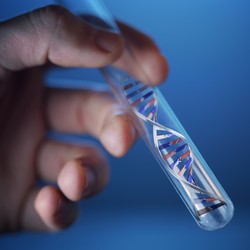Mechanistic insight into electroporation
Currently, viruses are the most efficient vectors for gene transfer but their application in humans raises many safety concerns. Delivery of naked DNA into living cells for gene therapy applications is probably the safest alternative to conventional vectors and chemical delivery methods. However, the cell membrane that surrounds cells is impermeable to large biomolecules such as plasmids and DNAs. Electroporation has been proposed as a technique for enhancing cell permeability and intracellular gene delivery by subjecting cells to electric field pulses. Yet, it is a crude and inefficient technique that suffers from low transfection efficiency, random uptake and excessive cell damage. Improving our understanding of cell electropore formation and DNA electrotransfer can help optimise the approach for human applications. The EU-funded NANOEP project worked to obtain in depth knowledge of the molecular mechanism underlying electroporation of the cell membrane. Researchers developed single molecule techniques with high spatiotemporal resolution to investigate the transport of biomolecules such as DNA. The idea was to study the mechanism of electroporation and electrokinetic flow of DNA at the micro/nanoscale for different length and time scales. Novel platforms were developed for nanochannel electroporation to deliver precise amount of cargos into living cells alongside devices for studying the sub-cellular response in the presence of external forces. Furthermore, to study electroporation at the microscopic level, scientists utilised micro/nano-fluidic devices to manipulate the cellular membranes. With the aid of simplified cell models and microscopy techniques, they successfully unravelled the molecular process behind electroporation. Currently, there is a great interest in the development of new methods for safe and efficient delivery of DNA into living cells. The NANOEP project outcomes help understand the principles of electroporation and DNA electrotransfer. These findings could be used to develop novel strategies for non-viral gene delivery in both fundamental biological and biomedical applications.
Keywords
Electroporation, gene therapy, DNA delivery, NANOEP, nanofluidic

